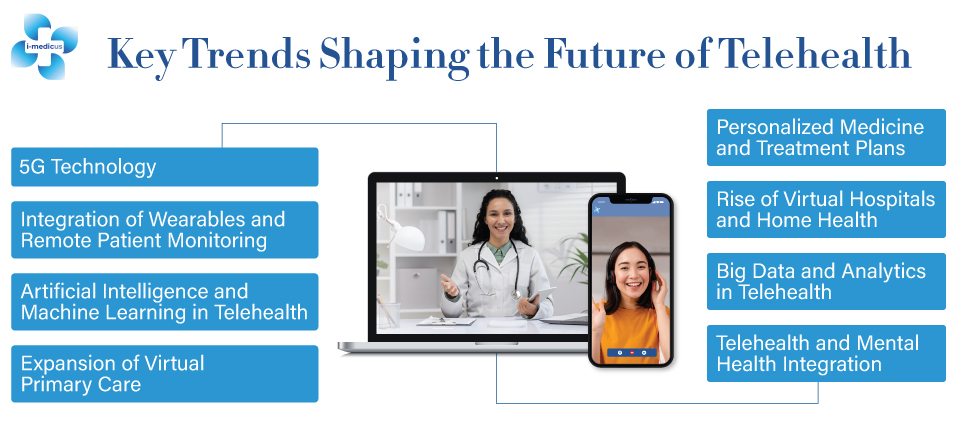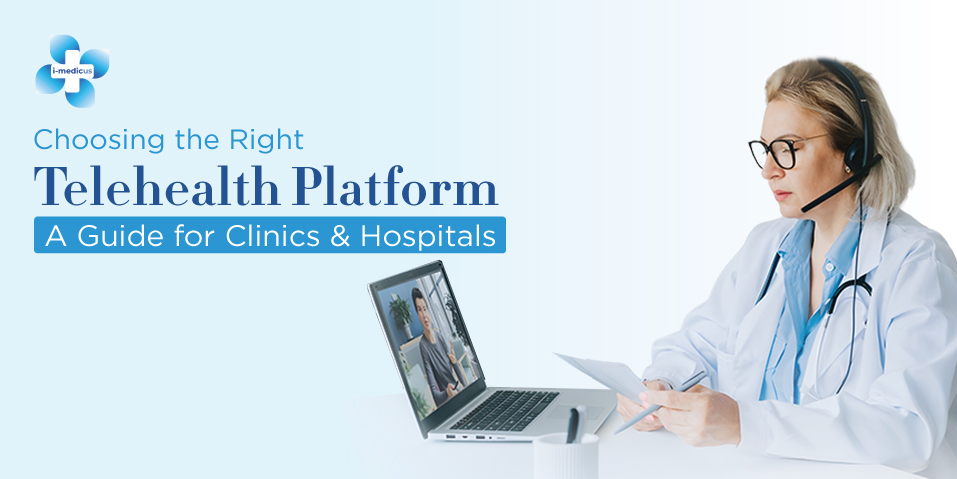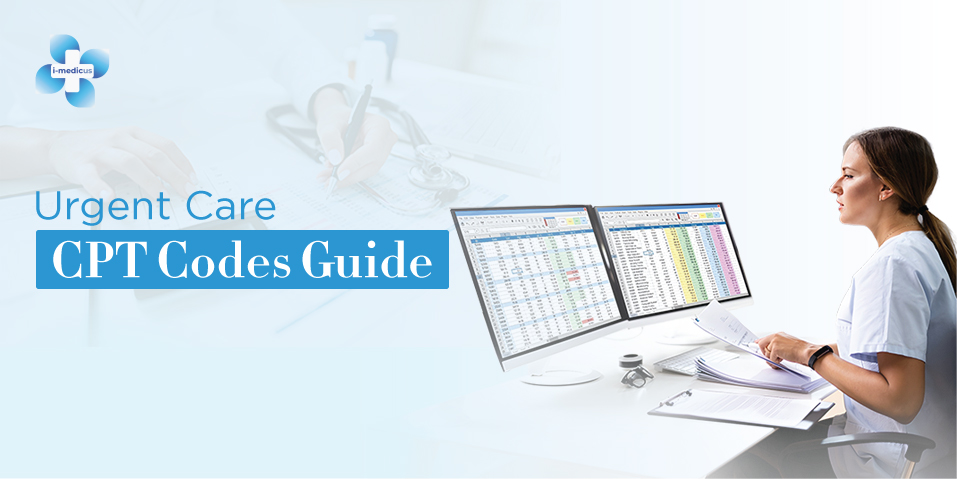When COVID hit, the healthcare sector faced a drastic change because now healthcare providers and patients were unable to meet for care. This is where the rise of Telehealth trends began, where healthcare professionals can deliver medical services remotely to patients, and patients find it more comfortable to get assistance at home.
Did you know? Over 116 million people use online doctor consultations globally. This number has increased even after COVID and become a new common option for patients to access healthcare services.
Since 2019, Telehealth has changed a lot and it’s continuously shaping and transforming more and more. So, there’s no surprise that the future of Telehealth has so many things to evolve.
In this blog, we’ll explore some future telehealth trends, what to expect in the next decade, and predictions that will shape the future of Telehealth. Let’s dive in!
Latest Stats About Telehealth
Here are some key stats about telehealth usage worldwide:
- Over 1.3 billion people will use digital health products and services in 2024.
- The digital health market is expected to reach $1,500.69 billion by 2032.
- 74% of millennials prefer using virtual appointments for convenience and flexibility.
- 78.6% of US hospitals deliver medical services to patients through telehealth services.
- 80% of patients have used telemedicine at least once.
Key Trends Shaping the Future of Telehealth

Here are upcoming trends that shape the future of Telehealth:
1. 5G Technology
5G technology is set to change the future of Telehealth by offering faster and more reliable internet connection to establish a strong connection between healthcare professionals and patients remotely. This means now, things like virtual consultations, e-prescriptions, and medical documents like X-rays or MRI reports can be shared and accessed smoothly and enhance health care services. 5G will play a transformative role, especially in rural or underserved areas where internet services are poor. Also, 5G makes things like remote surgeries possible, where doctors can now use robotic systems to perform eruptions from far away and provide high-quality care. Overall, 5G makes the connection between healthcare and technology stronger and more reliable, which now makes healthcare services more efficient for patients and able to deliver high-quality care anywhere.
2. Integration of Wearables and Remote Patient Monitoring
Wearable devices are now one of the most popular health-tracking devices globally that almost everyone uses, and their demand is increasing rapidly. These smartwatches not only show time but also help people track things like heart rate, steps, and sleep. And soon, these devices will get better and help monitor serious health problems like diabetes, high blood pressure, and heart disease. So that user will be health conscious about their health and take the right steps like exercise and diet to have a healthy life. Telehealth closely works with remote patient monitoring (RPM) systems like fitness trackers to get real-time health updates of the patients and catch symptoms to prevent issues earlier. The overall role of wearable devices and remote patient monitoring is to let users stay updated about their health, lower hospital visits, and detect and prevent illness earlier.
3. Artificial Intelligence and Machine Learning in Telehealth
Artificial intelligence (AI) and machine learning (ML) have empowered Telehealth and made healthcare services more rapid, accessible, advanced, and personalized. There are now various AI tools available that are helping the healthcare sector to automate repetitive tasks, improve diagnosis, and create tailored treatment plans for patients. AI in Telehealth services has seamlessly integrated and now helps healthcare professionals and doctors connect at a more personalized level by predicting health problems, suggesting treatments, or spotting abnormalities in medical images to doctors and providing tailored plans for patients. Some AI tools like chatbots and virtual assistants are already helping patients with basic diagnoses and saving time for doctors and patients. This means when AI is integrated with telehealth platforms, then allows doctors to provide better care to patients and keep patients engaged in their care.
4. Expansion of Virtual Primary Care
During COVID-19, there was no option left for healthcare professionals and patients. They need to connect remotely and do virtual constellations. But now, healthcare professionals and patients find virtual care a more convenient, flexible, and better option than visiting a clinic. This approach has grown rapidly, and now most patients prefer to do virtual consultations rather than an in-person visit. Because this virtual healthcare is easier to access, it saves both time and faster diagnosis. Virtual care is now a primary care option in Telehealth and is expected to expand its functionalities to data sharing, specialist consultation, and personalized treatment.
5. Personalized Medicine and Treatment Plans
Artificial Intelligence is making telehealth services more personalized for each patient. Now, healthcare professionals and doctors are using AI healthcare solutions to analyze each patient’s health records, medical history, and test reports to understand a patient’s condition better, identify abnormalities accurately, and give more personalized medicine and treatment plans. In Telehealth, providing customized care is becoming more valuable because it’s the most effective and safest option and leads to better health outcomes for patients. So, instead of offering generalized medical guidelines, now with the help of AI, doctors can exactly spot the issue of each patient and give tailored medical solutions to improve the chances of successful treatment. Ultimately, AI helps doctors make better decisions, provide better care to patients, and enhance healthcare outcomes.
6. Rise of Virtual Hospitals and Home Health
The concept of virtual hospitals is more likely to become a reality, all thanks to the growing telehealth technology. Virtual hospitals are specialized hospitals that use telehealth platforms, remote patient monitoring (RPM) tools, and artificial intelligence (AI) to keep track of patients’ health and provide personalized care to each patient remotely without the need for an in-person visit. It makes healthcare services more accessible and convenient for doctors and patients. On the other hand, hospital-at-home is another trend where patients get complete healthcare services at their home for serious conditions (like heart failure or pneumonia) and medical support remotely.
7. Big Data and Analytics in Telehealth
AI-powered analytical tools are playing a crucial role in the telehealth sector. As the volume of healthcare data is increasing rapidly, these tools help healthcare professionals analyze the large amount of data and make data-driven decisions for providing more efficient healthcare services to patients. There are numerous ways analytical tools help in Telehealth:
- Predictive analytics: It helps predict health issues by early analyzing patient’s past data.
- Personalized treatment: It helps create personalized medicine and treatment plans for patients for better healthcare outcomes.
- Remote monitoring: Wearable devices provide real-time data to alert if something goes wrong quickly.
- Operational efficiency: Ana; using data helps uncover trends and improve health strategies.
- Data-driven decisions: Helping healthcare professionals make data-driven decisions to provide better care,
8. Telehealth and Mental Health Integration
Telehealth has already made a significant impact in the mental health area, especially in COVID-19, when mental issues patients are growing and require therapy and counseling from specialists. So, the patients take virtual consultations during the pandemic and get the best solutions for their mental health from experts. This trend is likely to continue, and now Telehealth has become a key role in addressing mental health issues. As per stats, more than 40% of psychologists are providing their consultations through telehealth services. Plus, AI is helping to improve patients’ health by analyzing their real-time data and assisting doctors in providing more effective treatment plans.
Future of Telehealth
Telehealth is now an integral part of the healthcare sector, and it’s here to stay. This growing demand for Telehealth has numerous benefits, including convenience for patients and doctors, improved access to care, and better healthcare outcomes. In the coming years, technologies like AI/ML enable more personalized care to patients and analytics tools give valuable insights that help healthcare operations more efficiently. So, the future of Telehealth is bright and patient-centered for easy accessibility worldwide.
Ready to revolutionize your medical care with a telehealth solution?
Try i-medicus and expand your patient reach today!
Conclusion
Overall, Telehealth has become a crucial part of the healthcare sector. Patients are more likely to prefer Telehealth for quick consultation, fast diagnosis, and personalized treatments. With the advent of technology, more hospitals and clinics are starting to utilize telehealth platforms to deliver their services remotely to patients. So, it’s the right time for healthcare professionals to use the telehealth platform and make their healthcare services easily accessible without location limitations.
Ready to revolutionize your medical care with a telehealth solution? Try i-medicus and expand your patient reach today!
Frequently Asked Questions (FAQs)
Q1. What is Telehealth?
Telehealth means delivering healthcare services remotely through a digital platform. It allows patients to consult with doctors on video calls, phone, or live chat rather than in-person visits. It helps doctors and patients save time, more comfortably, and provide more personalized care to patients.
Q2. Will Telehealth replace in-person doctor visits?
No, Telehealth will not replace in-person visits, but it will work alongside them. Some major problems still required in-person visits.
Q3. What are wearable devices, and how do they benefit Telehealth?
Wearable devices like fitness trackers that track real-time data like heart rate, steps, sleep time, etc. So that doctors can monitor this data and catch issues quickly to provide better care.
Q4. How is AI used in telemedicine?
AI helps doctors analyze patients’ data to predict health problems and create personalized treatment plans to improve healthcare outcomes.








